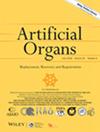Pre-processing visual scenes for retinal prosthesis systems: A comprehensive review
Abstract
Background
Retinal prostheses offer hope for individuals with degenerative retinal diseases by stimulating the remaining retinal cells to partially restore their vision. This review delves into the current advancements in retinal prosthesis technology, with a special emphasis on the pivotal role that image processing and machine learning techniques play in this evolution.
Methods
We provide a comprehensive analysis of the existing implantable devices and optogenetic strategies, delineating their advantages, limitations, and challenges in addressing complex visual tasks. The review extends to various image processing algorithms and deep learning architectures that have been implemented to enhance the functionality of retinal prosthetic devices. We also illustrate the testing results by demonstrating the clinical trials or using Simulated Prosthetic Vision (SPV) through phosphene simulations, which is a critical aspect of simulating visual perception for retinal prosthesis users.
Results
Our review highlights the significant progress in retinal prosthesis technology, particularly its capacity to augment visual perception among the visually impaired. It discusses the integration between image processing and deep learning, illustrating their impact on individual interactions and navigations within the environment through applying clinical trials and also illustrating the limitations of some techniques to be used with current devices, as some approaches only use simulation even on sighted-normal individuals or rely on qualitative analysis, where some consider realistic perception models and others do not.
Conclusion
This interdisciplinary field holds promise for the future of retinal prostheses, with the potential to significantly enhance the quality of life for individuals with retinal prostheses. Future research directions should pivot towards optimizing phosphene simulations for SPV approaches, considering the distorted and confusing nature of phosphene perception, thereby enriching the visual perception provided by these prosthetic devices. This endeavor will not only improve navigational independence but also facilitate a more immersive interaction with the environment.

 求助内容:
求助内容: 应助结果提醒方式:
应助结果提醒方式:


